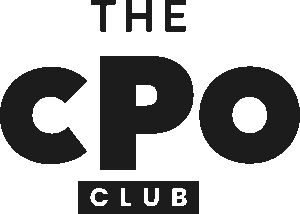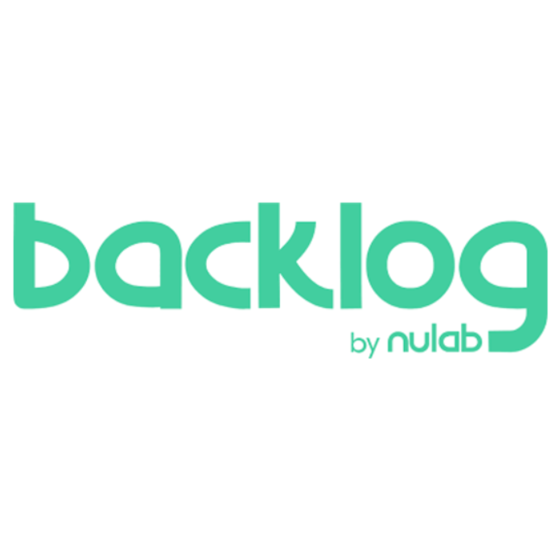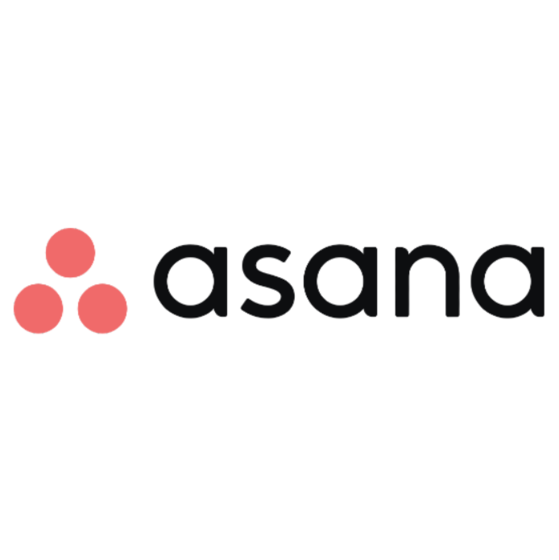10 The Best Milestone Software Shortlist
Here's my pick of the 10 best software from the 32 tools reviewed.
With so many different milestone software available, figuring out which one is right for you is tough. You know you want to ensure that product development stays on track, aligns with strategic goals, and successfully reaches key milestones throughout its lifecycle but need to figure out which tool is best for it. I've got you! I’ve looked into the best milestone software available and used my personal experiences as a product manager in large teams to round up my top picks in this article.
What Is Milestone Software?
Milestone software is a type of tool that helps product managers and teams plan, track, and achieve significant milestones in the development and launch of a product. These milestones are crucial points in the product lifecycle, marking key achievements, deadlines, or the completion of essential tasks.
Milestone software facilitates roadmap creation, clarifying deliverables, task management, project scheduling, setting up workflow automations, and tracking progress with interactive dashboards. Product development teams use these tools to stay aligned and on track with their workloads, whether they’re working with an Agile or waterfall workflow methodology.
The 10 Best Milestone Software Summary
| Tool | Best For | Trial Info | Price | ||
|---|---|---|---|---|---|
| 1 | Best for managing milestone tasks | Free plan available | From $4/user/month (billed annually) | Website | |
| 2 | Best for building customized workflows | Free trial available | From $24/user/month | Website | |
| 3 | Best for Agile project management | Free plan available | From $35/month | Website | |
| 4 | Best for financial management and reporting | 14-day free trial | From $20/user/month | Website | |
| 5 | Best for managing complex, inter-connected projects | 30-day free trial | From $10.99/user/month (billed annually) + free plan available | Website | |
| 6 | Best for time tracking and project costing | Free demo available | From $10/user/month (billed annually) | Website | |
| 7 | Best for managing service processes and compliance | 14-day free trial | From $10/user/month | Website | |
| 8 | Best with resource management included | 30-day free trial | Pricing available upon request | Website | |
| 9 | Best milestone software for managing multiple teams | 30-day free trial | From $8/user/month | Website | |
| 10 | Best for software development product management | 14-day free trial | From $8/user/month | Website |
Overviews Of The 10 Best Milestone Software
In this section, I’ve written detailed overviews of the top 10 best milestone software that made it onto my list. I’ve outlined each tool’s best use case, standout features, integrations, pricing information, and pros and cons. I’ve also added a screenshot of the user interface, to give you a feel for the experience.
Todoist is a task management application designed to help you organize your work and life. It allows you to capture tasks, organize projects, and plan your day efficiently.
Why I picked Todoist: I picked Todoist because it lets you set deadlines separately from due dates, which helps you plan ahead without losing sight of what’s urgent. You can also use labels to group milestone-related tasks across different projects, making it easier to track progress no matter where the work sits. These features give you more control over how you organize and monitor key deliverables without things falling through the cracks.
Todoist Standout Features and Integrations
Standout features include task priorities, which make it easy to see what's most important and what can wait, helping you focus on high-impact tasks first. Additionally, task descriptions allow you to keep all the necessary information and links you need to get started right inside your tasks, reducing the need to switch between apps.
Integrations include Airmail, Evernote, Google Calendar, IFTTT, Zapier, Jira, Alfred, AI Assistant, Make, Microsoft Teams, Newton Mail, and Slack.
Pros and cons
Pros:
- Accessible on various devices and platforms
- Effective task prioritization tools
- Quick task capture with natural language input
Cons:
- No native time tracking capabilities
- Lacks advanced task management features
New Product Updates from Todoist
New Calendar Layout in Todoist Today View
Todoist introduces a calendar layout in the Today view, enhancing task scheduling on all platforms. For more information, visit Todoist's official site.
Kintone is a highly customizable project and workflow management platform.
Why I picked Kintone: I chose to include this platform on my list because of its unique approach, which allows you to build applications to suit your business processes. This makes for a highly customizable solution, as you can map out your specific workflows and processes, and automate elements of them. You can create apps to manage your product development process, new release process, and other workflows to manage key milestones.
Kintone Standout Features and Integrations
Some of the standout features of this product include its drag-and-drop application builder, which makes setting up new workflows quick and easy. It also has a large bank of app templates to get you started. Crafting new workflows and processes won't add too much to your team's workload.
Integrations include Evernote, Dropbox, Box, HubSpot, Salesforce, GitHub, Google Workspace, Twilio, Typeform, Mailchimp, and Okta, among many others.
Pros and cons
Pros:
- Suitable for various business functions
- Granular permission controls
- Highly customizable and flexible
Cons:
- Interface can be complex for beginners
- Setup can require some technical expertise
Backlog is a project management tool that's specifically designed for Agile workflows.
Why I picked Backlog: I selected this software because of its focus on Agile product development methodologies. The tool's ethos is "plan less, do more," and its tools support that approach to product management. Milestones and versions can be established to track incremental releases, and Gantt charts let you map out the overview of your product development plan.
Backlog Standout Features and Integrations
Standout features include software development-specific features such as issue and bug tracking. You can set up an automated issue creation system, allowing your team to prioritize and tackle issues in the way that makes sense to them. Issue templates are also included, helping you speed up the process.
Integrations include Slack, Jira, Jenkins, Webhooks, Microsoft Teams, Dropbox, Box, Google Drive, and LambdaTest, among others.
Pros and cons
Pros:
- Mobile apps for Android and iOS
- Free plan for up to 10 users and 1 project
- Software development-specific features
Cons:
- May not be suitable for non-Agile methodologies
- Limited projects with lower-tier plans
BigTime is a project management tool that uniquely emphasizes financial management and reporting, making it suitable for professional services businesses.
Why I picked BigTime: This software is a strong choice for businesses seeking in-depth fiscal control and oversight. I selected it for my list because of its financial management features, which include billing and invoicing and centralized project financials. Time tracking and rate management are also in the feature list, helping you make informed plans for project milestones and budgets.
BigTime Standout Features and Integrations
Standout features include the software's robust financial analytics and reporting capabilities. Both pre-built dashboards and custom reports can be configured, ensuring you have the essential financial data needed to plan projects and milestones. Additionally, onboarding and training are included in all paid plans, ensuring you get up and running quickly with the system.
Integrations include QuickBooks, Salesforce, Slack, Zoho, Jira, Sage, HubSpot, Lacerte, and Google Workspace. Zapier can also be connected, unlocking additional integrations with a paid account.
Pros and cons
Pros:
- Lots of knowledge base content available
- Personalized onboarding with all plans
- Tailored to the needs of professional services businesses
Cons:
- Limited customization options
- User interface may feel complex for first-time users
Asana is a product and project management software that's user-friendly, yet capable of facilitating complex cross-departmental work management.
Why I picked Asana: I included this platform on my list because of its ability to keep complex, inter-dependent projects connected. For example, you can assign one task to many projects, and create task dependencies to avoid doubling up on work and documentation. You can also set up company-wide objectives that projects can then be connected to. This is a high-level way of managing collective milestones, and connecting each team and department's work to those shared goals.
Asana Standout Features and Integrations
Some of the standout features of this software are its automation capabilities. You can set up task automations as well as automated workflows and reports using the platform's smart rule builder. This allows you to automate menial tasks like filling out project cards or pushing cards forward in a workflow.
Integrations include Microsoft Teams, Adobe Creative Cloud, Salesforce, Google Drive, Dropbox, GitHub, Slack, Tableau, and Instagantt. You can also integrate Asana with other apps via the REST API.
Pros and cons
Pros:
- Free plan with unlimited projects
- Drag-and-drop task management system
- Simple automated workflow builder
Cons:
- Free plan has limited features
- Doesn’t have a built-in time tracking
FunctionFox is a project management platform that facilitates milestone management, as well as time tracking and project costing.
Why I picked FunctionFox: This platform earned its spot on my list because of how it combines time tracking with project budgeting and management. It provides businesses with a clear understanding of how time and resources are distributed across their projects. This allows you to set realistic budgets, timelines, and milestones for your project or product development.
FunctionFox Standout Features and Integrations
One standout feature of this platform is its robust reporting capabilities. You can draw up reports on various details of your projects, like time and money spent and team productivity. It offers interactive charts to track your core metrics, too.
Integrations are not listed by the provider.
Pros and cons
Pros:
- Invoicing and quoting included in paid plans
- Unlimited users with all paid plans
- Free plan for up to 3 users and 2 projects
Cons:
- Project management features limited in classic plan
- Reporting limited in classic plan
beSlick is a process and workflow management system that's well-suited to the needs of businesses in the hospitality and service-based industries.
Why I picked beSlick: This software stands out for its focus on service-oriented process management, which is why I included it on my list. Its workflow and process builder allow you to map out the specific steps team members need to take when providing services or accomplishing tasks. You can also assign specific tasks and manage team and individual to-dos, ensuring important milestones are achieved towards team objectives and projects.
beSlick Standout Features and Integrations
One standout feature of this platform is its collaborative to-do lists. All tasks that need to be accomplished can be added to the shared list, and team members can claim tasks on an ad hoc basis. Tasks can also be assigned to specific team members as needed. Each person can then set up their own personalized to-do list to manage their own workload.
Integrations can be configured with a paid Zapier account.
Pros and cons
Pros:
- Mobile app available
- Custom onboarding with all plans
- Unlimited tasks, templates, and forms with all plans
Cons:
- No native integrations, only ones via Zapier
- All plans allow 15 users, fee for each additional user
Moovila is a complete project management platform with resource capacity management and critical path automation capabilities.
Why I picked Moovila: This tool caught my attention due to its impressive range of features and the fact that it has resource management tools included. The software pulls data from your employee calendars to provide an overview of availability. From there, you can assign tasks based on workloads. As you update task assignees, the data updates in real-time. You can also manage your resource budgets from inside the platform.
Moovila Standout Features and Integrations
Some of the standout features of this product are its real-time updates and risk identification. The risk identification tool helps you spot potential bottlenecks and delays, helping you keep tasks on track. Every time you update a task, due date, milestone, assignee, or status, the system refreshes to show how that impacts the rest of your project plan.
Integrations include Jira, Microsoft 365, Salesforce, HubSpot, QuickBooks, Excel, Dropbox, Microsoft Teams, and Google Drive, among others.
Pros and cons
Pros:
- Effective risk identification tools
- Intuitive user interface
- Robust task management features
Cons:
- No free trial period
- Limited customizability
Flow is a project management tool designed to facilitate team management and milestone tracking.
Why I picked Flow: Choosing Flow was easy for me because of its strong emphasis on team management. You can add team filters, set up segmented groups for projects, and view timelines and workloads all together in the timeline view. Project calendars also give an overview of how teams will progress on their milestones, and color coding keeps each team's projects and tasks organized.
Flow Standout Features and Integrations
Standout features include the software's built-in communication tools. Direct messages, chat channels, and commenting are all included in the platform, helping to keep project discussions centralized and contextual. You can also attach files in any type of message, and markdown items for in-app collaboration.
Integrations include Slack, Google Drive, Dropbox, Box, OneDrive, Sharepoint, Harvest, Google SSO, and Microsoft SSO. You can configure additional integrations with a paid Zapier account.
Pros and cons
Pros:
- Full encryption included in all plans
- Lots of self-serve help center content
- Unlimited tasks with all plans
Cons:
- Payments can only be made in USD
- Minimum of 2 users, not ideal for individuals
Jira is a well-known Agile project and product management tool designed primarily for software development teams.
Why I picked Jira: I added this popular Agile product management tool to my list because of how it caters to the needs of software development teams. You can set up customizable Scrum or Kanban boards to manage team progress on tasks and issues related to product development. Meanwhile, the timeline view lets you map out key milestones and due dates, keeping your team on track with the bigger picture.
Jira Standout Features and Integrations
Standout features of this software include its product roadmap and backlog prioritization capabilities. You can break down work items as epics, stories, issues, and tasks, creating clarity and providing granularity. The visual roadmap provides an overview of the status of various initiatives, helping team members see what's in progress, on hold, or yet to be started.
Integrations include Adobe, Drobbox, Figma, Google Workspace, InVision, Microsoft, Miro, Slack, Zendesk, Zoom, and more.
Pros and cons
Pros:
- Automations available with all plans
- Free plan for up to 10 users
- Large bank of templates available
Cons:
- No mass-editing and scripting
- Complex for beginners or non-technical users
Other Noteworthy Milestone Software
Below is a list of additional Milestone Software that I shortlisted, but did not make it to the top 10. Definitely worth checking them out.
- monday.com
For customizable visual project planning
- Zoho Projects
Milestone software for remote teams
- Wrike
With built-in team collaboration tools
- PathPro
For community-driven development
- Replicon
For enterprise-grade workforce management
- Airtable
For managing projects with complex data structures
- Teamwork.com
For managing milestones across departments
- Paymo
For small businesses with time tracking and accounting
- GanttPRO
For detailed project planning with Gantt charts
- Avaza
For freelancers and agencies with integrated invoicing
- Everhour
For precise time tracking and budget control
- Adobe Workfront
Milestone software for marketing teams
- Float
Milestone software with team scheduling
- Nifty
For Agile project management with integrated team chat
- Flowlu
With built-in CRM and financial tools
- Basecamp
With a central project communication hub
- MeisterTask
For task management with workflow automation
- Trello
For simple task management with Kanban boards
- Smartsheet
Milestone software with a spreadsheet-like interface
- Notion
For collaborative knowledge management
- Glasscubes
Secure team collaboration and file sharing
- ClickUp
For an all-in-one work management solution
Selection Criteria for Choosing Milestone Software
Having tried and evaluated countless product and project management tools, I sought out ones with exceptional milestone features for this list. To evaluate them fairly and compare one to the next, I used the following selection criteria:
Core Functionality
As a baseline, the platforms needed to fulfill the following tasks to make it onto my list:
- Ability to set milestones within a product roadmap or plan.
- Ability to track project milestones as work progresses.
Key Features
Beyond the basic functionality I’ve outlined above, here are some additional key features I looked for while testing software for this list:
- Various project views: Gantt charts, Kanban boards, calendar views, spreadsheet views, and timeline views...the more view options, the merrier.
- Task management: The ability to assign and prioritize project tasks, create subtasks, task lists, and task dependencies, and track tasks through to completion.
- Resource management: Allocating work based on team member capacity and skill sets, creating work schedules, time management, etc.
- Work management: Individual workload management tools like to-do lists, task notifications, time tracking, etc.
- Team collaboration tools: Messaging, file sharing, Slack or Microsoft Teams integrations, and other features that facilitate teamwork.
- Advanced features: Product portfolio management, inter-project task dependencies, invoicing, and other extra specialized tools.
Usability
I always take into account how user-friendly a product management software is when evaluating it for one of my lists. An intuitive user experience that makes it easy to manage the project lifecycle and track progress of your work is essential. Key usability features I look for are a drag-and-drop interface, customizable project templates, and mobile apps.
Pricing
Typically, milestone software follows a subscription-based pricing model, with basic paid plans starting as low as $5 per user per month or up to $30 per user per month. All-in-one project management solutions may be at the higher end, but specialized tools with in-depth features can also cost more than more general software. Many platforms will offer a free plan that may be suitable for small businesses or startups, and free trials are usually available, too.
Most Common Questions Regarding Milestone Software (FAQs)
Still have some questions about milestone and task management software? Look no further, we have answers!
What are the benefits of using milestone software?
Milestone software offers several benefits:
- Clearer visibility: It helps visualize project timelines and track the progress of individual tasks.
- Improved efficiency: These tools streamline project management processes, thereby boosting efficiency and productivity.
- Better collaboration: Team members can collaborate effectively in real-time, improving communication and minimizing the chances of errors.
- Detailed reporting: With comprehensive reports, managers can analyze performance, identify bottlenecks, and make data-driven decisions.
-
Are there any free milestone software options?
Yes, some tools offer free versions with limited functionality. Trello, MeisterTask, and Todoist all have free plans suitable for individuals or small teams. However, these free versions have limitations in terms of features and the number of projects or users.
Milestone Software Keeps Teams on Task
In conclusion, selecting the right milestone software can significantly improve product management, streamline your processes, and enhance productivity. The software you choose should align with your team's workflow, cater to your specific use case, and offer a price point that fits within your budget.
Key Takeaways To Select The Best Milestone Software:
- Core functionality: The right milestone software will offer functionality tailored to your project needs. From visual project planning to comprehensive software development capabilities, the chosen tool should help manage and track milestones effectively.
- Key features: Look for unique features that make a tool stand out. It could be an easy-to-use interface, powerful integrations, or robust reporting capabilities. These features can significantly enhance your team's productivity and efficiency.
- Pricing and usability: Consider the pricing model and usability of the tool. While budget is a critical factor, usability impacts how quickly your team can adapt to the software. Therefore, balancing affordability and user-friendly design is vital for successfully implementing milestone software.
Want to keep up with the latest content from The CPO Club? Subscribe to our newsletter mailing list to receive updates!






















